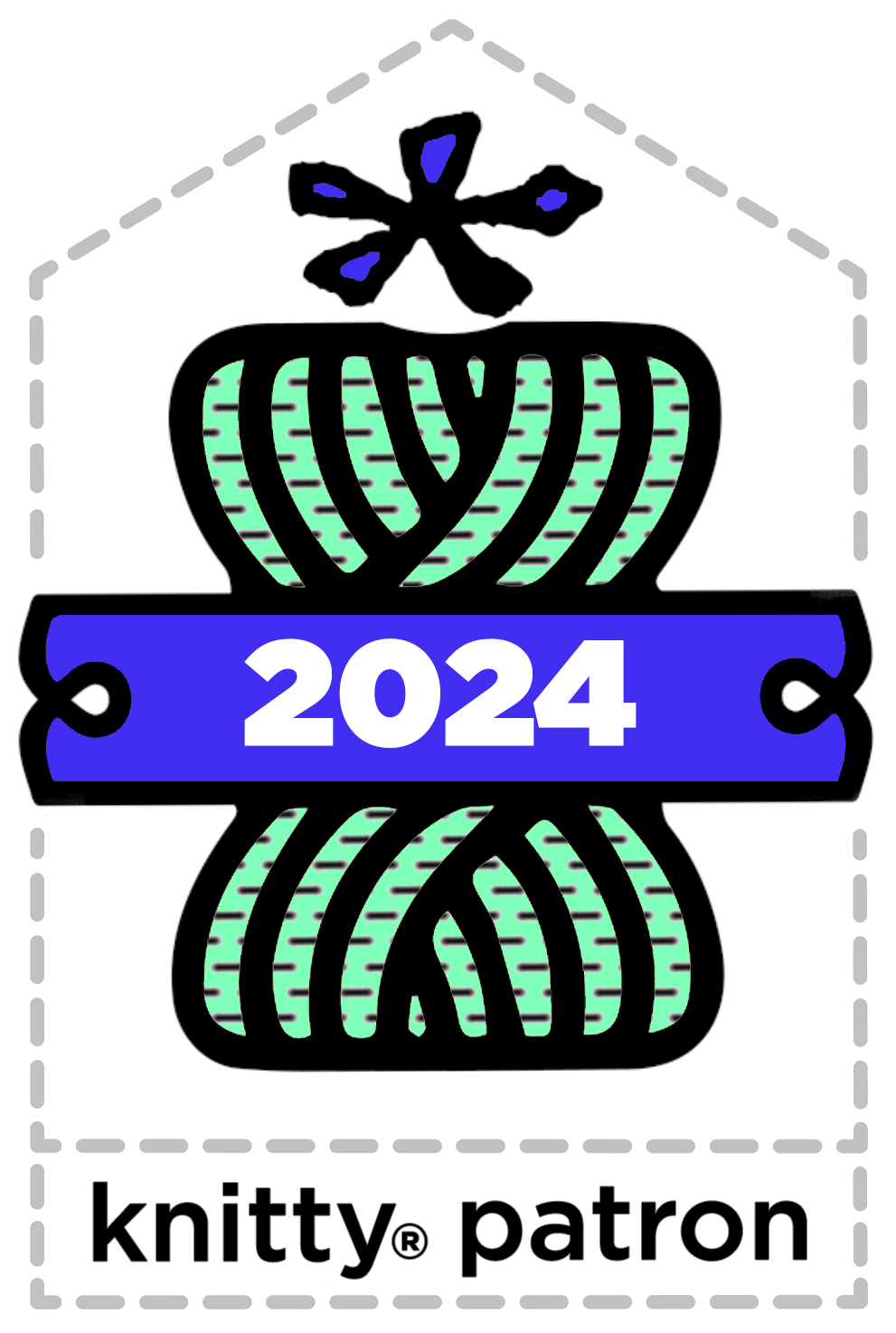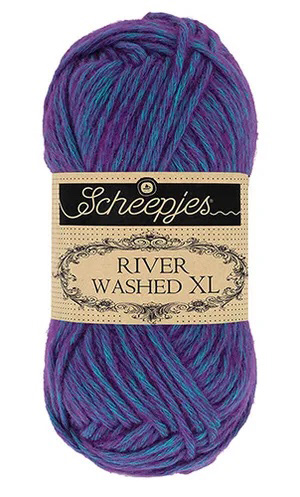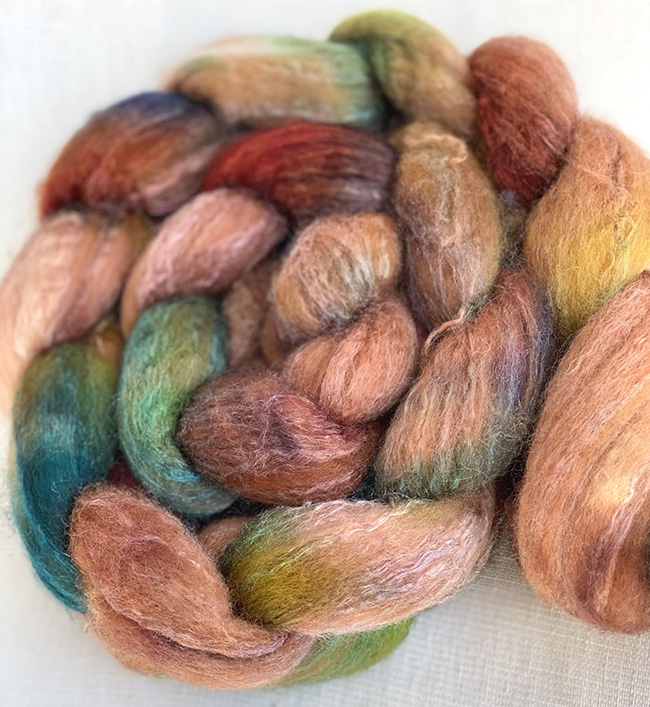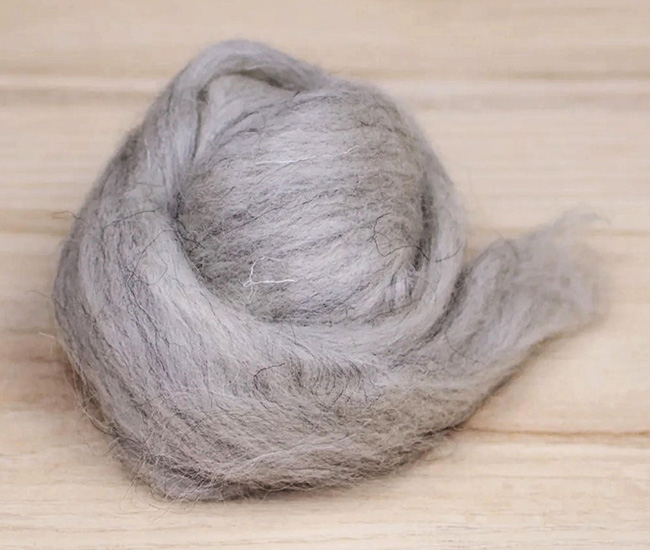Substitution Solutions, a column where a spinner uses her knowledge of fiber, yarn construction and knitting to substitute yarns by Jillian Moreno
INTRODUCTION
Substitution Solutions
How to substitute yarn in a pattern
It’s so important for a knitter to feel comfortable substituting a yarn. More and more designers are offering substitution ideas in their patterns, or at least a description of the type of yarn to look for when choosing a substitute, and you'll find helpful descriptors of Yarn Characteristics in every Knitty pattern starting with Winter 2021.
In this column, I walk you through substituting yarn for a couple of patterns in the current issue. There is absolutely nothing wrong with the great yarns that our designers have chosen for their projects. I’m just giving my opinion on other yarns to use, based on how I – as a spinner – look at a yarn and a pattern, making choices based on what I know about fiber, yarn construction, and knitting. Even if the recommended substitution yarns are discontinued one day, my hope is that the information below will make the process of choosing an alternate yarn less daunting, and help you knit projects that give you joy in the knitting and wearing.
Possibilities!
This issue I’m digging into two very different patterns to talk substitution, an intarsia project, and a warm fuzzy mitten project. There are so many possibilities for both of these patterns, and different choices change how the projects look, I hope you explore beyond the suggestions I give you!
Penland

Penland Cardigan by Merri Fromm
Description of the project:
Penland is a fantastic boldly graphic intarsia cardigan, knit from a really interesting yarn. Scheepjes River Washed XL is a yarn made up of many fine multicolored plies in highly contrasting colors, barely twisted and incased in a very loose I-cord made of near-invisible fine thread. The yarn is very light even for a heavy worsted mostly cotton yarn.
What is important about this sweater? The color and the style of color are really the stars of this cardigan. The designer has chosen a yarn that gives a heathery effect to the knitted fabric giving the sweater a blended look color-wise.
What elements of yarn construction should we think about? Since this is about color the construction of the yarn is about how you want the color(s) to look when knit. The yarn chosen by the design is a yarn that gives soft color and a bit of texture and a fluffy look to the sweater. If you want clearer color, you might choose a yarn that is dyed solid or semi solid, if you want a crisper look to your stitches chose a yarn with more plies or a smoother surface.

Penland original yarn: Scheepjes River Washed XL
Yarn Specified in the pattern:
Name: Scheepjes River Washed XL
Fiber: 70% Cotton / 30% Acrylic
Type of Spin: lightly twisted fine threads encased in I-cord net
Ply: I-cord
Length/ Weight: 82y/75 meters / 50 gms
Ballband Gauge: 14 rows /19 rows = 4 inches/10 cm on US 8/ 5mm
Pattern Gauge: 16 sts / 24 rows = 4 inches/ 10 cm in stockinette stitch on US 6 / 4mm needles
Substitution Solution:
I’m interested in having clearer colors and crisper look to the color and intarsia than the suggested yarn. I chose a yarn that was smooth, with a good ply twist for greater stitch definition. I chose Blue Sky Fibers Extra which is a blend of alpaca and Merino, making it soft with a little bit of a halo. The colors are dyed solid. The overall effect this yarn will have on the sweater is that it will look bolder, and the colors will be very distinct because of the yarn’s structure.

Suggested replacement yarn:
Name: Blue Sky Fibers Extra
Fiber: 55% Baby Alpaca / 45% Fine Merino
Type of Spin: worsted
Ply: 2-ply
Length/ Weight: 218yds / 199m | 5 ounces / 150g
Ballband Gauge: 16-20 sts to 4 inches/10cm on US 7-9 / 4.5-5.5mm needles
Spinning Solution:
As soon as I saw this sweater, I wanted to make it with handdyed fiber. I would choose a braid like Kim Dyes Yarn BFL/silk braid, and spin it as a 2-ply, letting the colors do what they want. I would use the handpainted fiber (top photo) for the crosshatch part of the design, and for the main color I would use some commercial natural grey top (bottom photo). I would spin them both with a woolen draft and make a 2 or 3-ply with medium twist.
Fiber of choice:
Name: Kim Dyes Yarn
Fiber: BFL/Silk
Weight: 4 ounces
Preparation: combed top
Spin: Woolen
Ply: 2-ply
![]()
Frostbitten

Frostbitten Mittens by Artesanitarium Designs
Description of the project:
These are mittens to keep you warm on the coldest days. They are knit from Icelandic yarn which combines the dual coats of the Icelandic sheep, for a lot of warmth and a little water resistance, and durability.
What is important about this project?
The warmth! They are woolen spun, which will help trap the warm air between the mitten and your hands, and they are knit at a tighter than ballband gauge, helping to keep out the wind. The look is soft and fuzzy.
What elements of yarn construction should we think about?
To make the warmest mittens look for a yarn that is woolen spun, for a mitten that is durable (for say, holding that dog leash on frosty morning walks) look for breeds or blends that aren’t as soft as Merino. To keep the soft and fuzzy look, use a yarn that is either single ply or 2-ply.


Frostbitten original yarn: Novita Icelandic Wool
Yarn specified in the pattern:
Name: Novita Icelandic Wool
Fiber: 100% Icelandic wool
Type of Spin: woolen
Ply: single
Length/ Weight: 98 yd/90m per 50g skein
Ballband Gauge: 18 sts/24 rows 4 in/10 cm in stockinette on US 7/4.5 mm needles
Pattern Gauge: 23 sts/32 rows/rounds 4 in/10 cm in stockinette flat and in the round on US 2.5/3 mm needles
Substitution Solution:
Green Mountain Spinnery makes some of the best woolen spun yarns in the US. The use all US fibers and spin them to be lofty and durable. Weekend Wool is a blend of Rambouillet, Columbia, Targhee, Friesian, Corriedale, Montadale and Romneys, a little bit of everything. The result is a light, warm, tweedy yarn that can stand up to wear and tear.
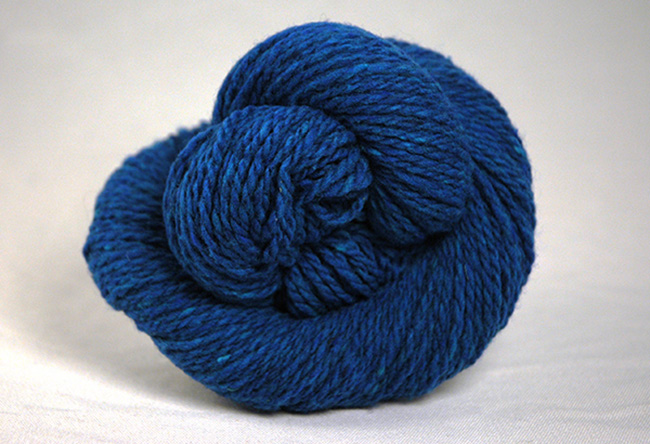
Suggested replacement yarn:
Name: Weekend Wool Green Mountain Spinnery
Fiber: 100% wool
Type of Spin: woolen
Ply: 2-ply
Length: 140 yds / 128m
Ballband Gauge: 4.5 sts per inch/2.5 cm on US 7/4.5 mm needles
Spinning Solution:
This absolutely the perfect project to work from fleece! Even a first time fleece project. You don’t even have to buy a whole fleece or a dirty fleece. There are people who sell partial fleeces and a company that sells washed fleece in 4-ounce increments. Remember to spin for a larger gauge (4.5 stitches to the inch) and knit tightly 5.5-6 stitches to the inch).
Fiber of choice:
Name: Fleece from your stash or Good Clean Fleece from Clemes and Clemes
Fiber: your choice, but I would use a medium wool
Prep: woolen, batts, rolags or flicked locks spun from the fold
Ply: 2-ply, low twist
Finish: whacking to help stabilze and strengthen the woolen yarn
![]()
ABOUT THE AUTHOR
 Jillian Moreno is Knitty's Catalyst and Spinning editor. She's the Developmental Editor for PLY Magazine and PLY Books. A couple years ago, she wrote the best-selling spinning bookYarnitecture: A Knitter’s Guide to Spinning: Building Exactly the Yarn You Want. Now she’s writing another spinning book and trying hard not to start weaving.
Jillian Moreno is Knitty's Catalyst and Spinning editor. She's the Developmental Editor for PLY Magazine and PLY Books. A couple years ago, she wrote the best-selling spinning bookYarnitecture: A Knitter’s Guide to Spinning: Building Exactly the Yarn You Want. Now she’s writing another spinning book and trying hard not to start weaving.
She lives in a house packed with fiber and books and has a hand-spinning Patreon over here.
Penland image © Merri Fromm; Frostbitten image © Artesanitarium; all other images courtesy the yarn and fiber dyers listed with the image. Contact Jillian







